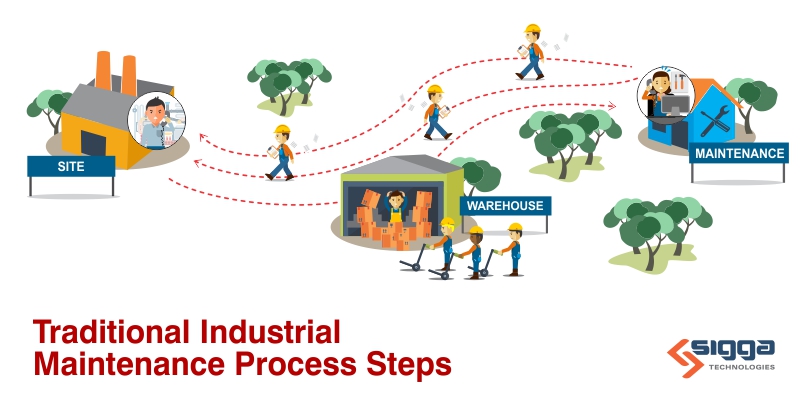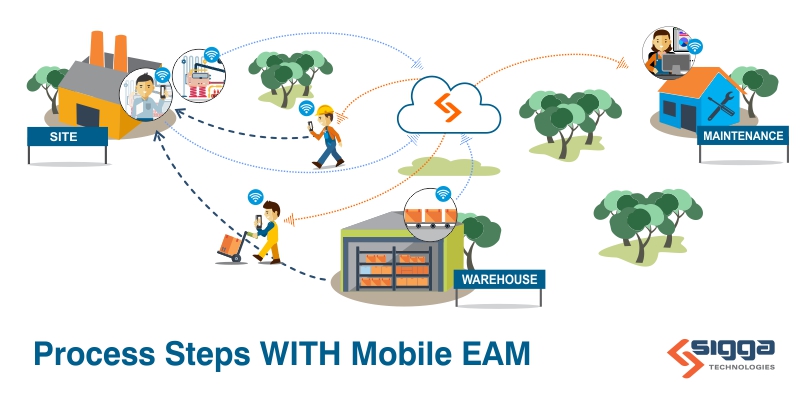Operator rounds and preventive maintenance inspections are critical to reducing risks, pre-empting potential failures, and to meet stringent compliance regulations. Today’s challenging environment has made it increasingly difficult for operators and technicians to effectively perform these core preventive tasks. Chief among them is a growing labor shortage that has made it hard for employers to find and fill open positions in operations with qualified workers.
Despite these challenges, organizations have failed to modernize and continue to rely on inefficient paper-based forms for operator rounds. Conducting inspections on paper creates more work for over worked teams from printing and distributing forms to excessive data entry for updating maintenance & safety records. In this article, we will explore some of these challenges and look at effective operator rounds software to improve compliance while reducing resources required for inspections.
The Importance of Operator Rounds and Preventive Maintenance Inspections
Operator rounds and preventive maintenance inspections are proactive procedures involving the routine inspection of the production environment to ensure that equipment is fully operational and in safe working condition. Preventive maintenance inspections are part of a proactive maintenance program to identify signs of wear and implement a corrective action to avoid a breakdown.
In most organizations, inspection processes consist of several core steps. First, engineers create checklists for every operational asset. These forms tell operators and technicians the steps and tasks to conduct a thorough inspection. Next, the assigned worker conducts the operator rounds. During their rounds, they identify any potential issues, make minor adjustments, and record their findings on the forms. Finally, they submit the forms to support personnel or enter the data themselves into the organization’s ERP system. From here, notifications are created for issues found to trigger a corrective maintenance work order.
In addition to ensuring that assets are working safely and properly, operator rounds are also conducted as an oversight of the working environment such as ensuring that walkways, stairways, and exit doors are clear of obstacles, that personal protective equipment is available and being utilized, and that there are no fire hazards. Industrial workplaces are subject to stringent safety compliance requirements like OSHA. If employers fail to satisfy these requirements (as proven by the records of completed operator rounds) they can receive stiff fines and face other regulatory sanctions and penalties.
In the U.S. alone, manufacturers pay $19,564 per employee on average to comply with federal regulations, almost twice as much as the per-employee costs shouldered by all firms. NAM.org
Inhibitors to the Execution of Operator Rounds
While these routine inspections seem simple, today’s organizations struggle to keep up with the ever growing list of safety and compliance regulations given the growing shortage of skilled labor to conduct the work.
41% of respondents say the key challenge to improving maintenance is lack of resources or staff. Plant Engineering
As employers continue to be challenged to fill open positions in operations and maintenance, the situation leads them to prioritize urgent tasks over preventive work and allow short-cuts in processes to complete proper inspections. Without preventive maintenance and inspections, the situation results in more breakdowns and unplanned downtime, which to resolve takes further precedence over preventive tasks. This creates a downward negative spiral of growing reactive work that is difficult to turnaround.
Operator rounds and preventive maintenance inspections will continue to play critical roles in helping to avoid unplanned downtime while keeping workplaces safe and in compliance with industry regulations. To overcome the inhibitors, organizations need to embrace technologies that will increase the efficiency of these routine tasks.
Replacing Paper-Based Processes
Organizations in every major industry have turned to technology to overcome resource challenges. While industrial maintenance organizations have been slow to adapt, more and more are adopting user-friendly technologies to automate work tasks and replace paper-based processes.
Mobile operator rounds software eliminates the need to manually print and distribute checklists. Operators and maintenance technicians can easily conduct an inspection, record their findings, and immediately notify management of any issues identified during their rounds. This notification allows a timely repair to be scheduled and avoid unplanned downtime.
Moreover, the added step of removing manual data entry improves the data accuracy and completeness of data with the ERP system for compliance reporting.
The Complexity of Inspection Processes
No two assets are the same and the inspection routines are dynamic. Regulations are constantly changing forcing modifications to the operator rounds checklists to ensure compliance to new requirements are well documented. Plus, reliability engineers, through Failure Mode and Effects Analysis (FMEA), are constantly identifying new early warning signs of potential failure to be checked in an inspection.
Although hard-coding inspections into an operator rounds software program may seem less adaptive than paper for the dynamic nature of inspection processes, it is time to look at current software capabilities. Today, there is software that is designed with the flexibility to be easily modified as quickly as your requirements change. A mobile app on a no-code platform can make it easy for any authorized user to make custom checklists and deploy to the workers without requiring costly software customization developers. Here’s a real-world example to illustrate the new opportunity.
Custom Requirements Easily Met
A manufacturer came to us to streamline their unique equipment inspection process. To meet compliance regulations, they were required to time stamp every inspection item on their checklists. And with their complex equipment, each checklist contained over 100 operations. They were conducting the inspections using paper checklists and then manually updating SAP. The process to open each inspection order in SAP and placing a time stamp on each operation took longer than actually performing the inspection itself.
We worked with this manufacturer to modify the Sigga mobile maintenance app which is built on a no-code platform. The app was easily customized to meet their compliance requirements without requiring expensive developers. The mobile app now allows a technician to conduct their inspection rounds with a digital tool. After completing an equipment inspection, they can select multiple operations within the app and instantly perform a mass update to SAP for the items that were good. Continuing, they could individually select the operations with issues and document the problems. The later action automatically opens notifications within SAP PM.
As a result of adopting the Sigga mobile EAM solution the manufacturer saw significant time savings and improved adherence to compliance regulations from the quality and completeness of the data captured. In addition, issues are now addressed faster reducing the risks of breakdowns.
Streamline Your Operator Rounds and Preventive Maintenance Inspections
Let us show you how you can easily digitize your unique inspection processes. Our mobile maintenance app is used by over 70,000 users improving technician productivity and data quality in SAP. This mobile app is now available on a no-code platform to make it fast and easy to adapt the software to your processes at any time. With the flexibility of current technology, there are no more excuses to fully digitize your operator rounds and preventive maintenance processes.
Sigga Mobile Maintenance
See how your unique processes can be digitized!











